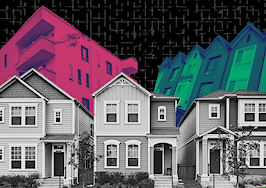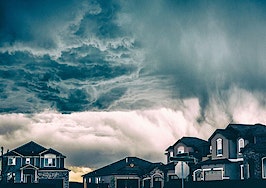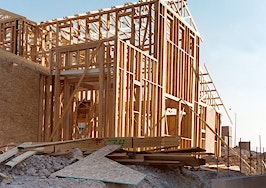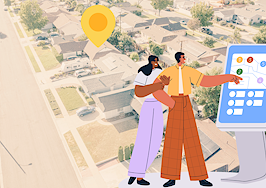This report is available exclusively to subscribers of Inman Intel, the data and research arm of Inman offering deep insights and market intelligence on the business of residential real estate and proptech. Subscribe today.
The U.S. is in a tough spot.
After a period of staggering price appreciation and soaring mortgage rates, housing is uniquely unaffordable right now. The situation is further exacerbated by the fact that the U.S. has — according to a Realtor.com report this year — spent a decade under-building new homes relative to new household formation. And of course when there is more demand for a thing than there is supply, prices just keep going up.
In response, many would-be city builders are grappling with how to add more housing. And they’re doing it against the backdrop of growing environmental challenges, opposition from incumbent homeowners (NIMBYs) and a challenging regulatory environment. What this means is that we’ve never been so desperate for more development, but that it has also never been more challenging to actually get anything done.
In an effort to understand the most sustainable ways to tackle this problem, Inman recently spoke with Michael Rodriguez, director of research at the non-profit Smart Growth America. Some of Rodriguez’s comments are included in our longer feature on cities of the future, but we’ve included more of Inman’s conversation with him below. The takeaway was that while it can, of course, be tempting to build a new place from scratch, that path is fraught with peril and failed experiments. Instead, Rodriguez argued that the better approach is to improve cities that currently exist.
Here’s what Rodriguez had to say. The conversation has been edited for length and clarity.
Inman: I’m trying to understand the wisdom between building new places from scratch versus retrofitting the cities that we already have. How do you guys see this issue? Is one option better than another?
Michael Rodriguez: We would probably be more apt to discourage the community from continuing to use greenfield [development]. If you look at our current principles, one of them is to effectively build infill development. It doesn’t mean that you never build anywhere else. But it means that development should be subject to scrutiny, strict scrutiny. Why is it that that your community needs to build out into the urban fringe rather than finding opportunities that are closer in?
Part of the reason for that is to not push into environmentally sensitive areas, and all the environmental reasons. But there’s also a little bit of a social signal that sounds like you’re giving up on your existing city.
Cities have a lot of infrastructure, millions and billions of dollars of infrastructure. But that infrastructure can’t be put to efficient use when your building is really low density and when you’re really building further out. So one of the points we make is that building greenfield development, especially further out in the urban fringe, is often a Ponzi scheme. A community might think that they’re making more tax revenues by potentially bringing in more residents or jobs out in the urban fringe, and that may be true in the short term. But you find that it’s actually economically inefficient, in fact in the red, to continue to build that way. So in a lot of senses, from an infrastructure standpoint, it’s actually the existing development that pays the bills.
When you say development on the urban fringe is a Ponzi scheme, what exactly do you mean? I understand how it may not pencil in financially, but what’s the Ponzi part?
The Ponzi part is that, eventually, the bill comes due. What that means is as the infrastructure gets old, you need to rehab, you need to repave.
Over 30 years, you’re spending almost three times as much on that infrastructure than you did to begin with. You’re stuck paying the operating costs, you’re stuck having to keep the infrastructure going. And then 30 years later, you hit a point where all this stuff needs to be done. And you have to ask “how do we pay for that now?” And the answer is, “Let’s open up another greenfield and repeat the cycle.” And that’s the Ponzi scheme, that it creates a perpetual need for this sort of growth.
You mentioned that doing new greenfield development can give the sense that you’re giving up on the city. That makes sense to me. But there are also a lot of people seeing that development has been done poorly in the past, and they’re facing regulatory hurdles, or intractable NIMBYism. So they’re saying, “We can’t do anything in existing places so we’ll just start over.” What do you say to folks like that?
A lot of the history of urban planning is so cyclical with the idea that there would be this utopian city out on the edge. How many times have people already thought about this? It’s nothing new at all. I mean, we’ve got Ebenezer Howard with the Garden City and Le Corbusier with his giant towers in the park. What they did with suburbanization actually is a great example. The whole idea of the suburbs and of the auto-centric city was this incredibly utopian idea of twentieth-century planners. They were giving up on the city, in effect. You see these videos from GM and Ford that are about the city of the future that would have automobiles throughout. They were these multi-leveled cities that look like Gotham City or Metropolis. They were fundamentally utopian visions.
We did it. They chased that utopia, they spent trillions of dollars chasing it through the interstate highway system, through federal land policy and planning. And now we’re looking at it and realizing, “Oh, wait, that didn’t work.”
These utopian visions don’t work because people think there’s one weird trick that you can just try, and you’ll fix all of society. But we’ve been building urban societies for 9,000 years. I don’t think there’s one magic trick you can do.
Why is it so hard to get right? You can go walk around a Paris or a Barcelona and it obviously works. Why is that so hard to build from the ground up?
A lot of the cities we love around the world, like these European cities that Westerners like a lot, are layered with age. Our favorite places don’t just happen in one fell swoop, they often happen incrementally over centuries and centuries. There’s one thing layered on top of another thing, one city layered on top of another.
When you think of the big boom cities that we’ve had in the last century, whether it’s Las Vegas, Phoenix, Brasilia, these are cities that came out of nowhere. I don’t think most would say we got them right. Those cities were built with the idea of automobile orientation. So eventually, over time, you’re gonna see more retrofits. I think your time is better spent retrofitting a lot of areas that are more car-centric and making them better. That’s really your biggest improvement for the buck. I think that’s where people’s energy is better spent.
Talk to me about the purpose of a city. You see a lot of older metros straddling a river, for example, or a port. Is that kind of thing important for a successful place?
Every city has to have a raison d’etre. People don’t build cities for absolutely no reason in any particular location. We come together for social reasons, for defense, for mutual economic well-being.
This guy, Joel Kotkin, I don’t like most of his writing, but he wrote one book called The City where he tried to be like, “What’s the history of the city?” And he posits that, basically, cities came together for a few reasons. It was always either economic function, military defense, or some sort of a social or religious or spiritual function.













